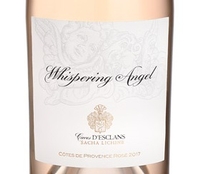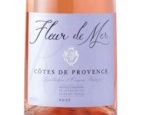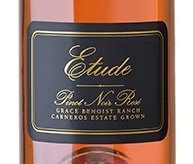The American wine consumer, once reluctant to drink pink wine, long ago abandoned the silly myth that pink equals sweet. Dry rosé wines are now widely embraced for the freshness and zing that made them popular in southern Europe for decades.
 Trust me on this: If you love wine, there is almost nothing more refreshing on a warm spring or summer day than a beautifully structured dry rosé. By that, I mean a rosé wine that is cultivated to deliver bright acidity and fermented dry. The crisp finish is the key element I look for when I buy rosé.
Trust me on this: If you love wine, there is almost nothing more refreshing on a warm spring or summer day than a beautifully structured dry rosé. By that, I mean a rosé wine that is cultivated to deliver bright acidity and fermented dry. The crisp finish is the key element I look for when I buy rosé.
Of course, I have a few personal favorites that never seem to disappoint regardless of vintage. As a first option, I typically look to the south of France, where they take their dry rosé wines very seriously. I’m quite fond of the Chateau d’Esclans Whispering Angel, Cotes de Provence (average $22 per bottle per the Wine-Searcher website), for its subtle strawberry and citrus aromas and fresh acidity.
 Fleur de Mer Rosé, Cotes de Provence ($20) provides a similar experience, as does the Gerard Bertrand Cote des Roses, Languedoc ($14). All three of these rosés from the south of France are remarkably consistent and widely distributed, so they’re pretty easy to find.
Fleur de Mer Rosé, Cotes de Provence ($20) provides a similar experience, as does the Gerard Bertrand Cote des Roses, Languedoc ($14). All three of these rosés from the south of France are remarkably consistent and widely distributed, so they’re pretty easy to find.
 On the domestic front, Etude rosé ($19) has been most impressive over the past several vintages while sourcing grapes from California’s Central Coast. Eberle is another superb example produced from Central Coast grapes. The Eberle rosé ($20) is primarily made from Paso Robles syrah and has lightened up in color and firmed up in structure in recent years, changes initiated by winemaker Chris Eberle just a couple of years ago. Sonoma County’s Rodney Strong is also hitting home runs these days with its dry rosé ($19) made from Russian River Valley pinot noir.
On the domestic front, Etude rosé ($19) has been most impressive over the past several vintages while sourcing grapes from California’s Central Coast. Eberle is another superb example produced from Central Coast grapes. The Eberle rosé ($20) is primarily made from Paso Robles syrah and has lightened up in color and firmed up in structure in recent years, changes initiated by winemaker Chris Eberle just a couple of years ago. Sonoma County’s Rodney Strong is also hitting home runs these days with its dry rosé ($19) made from Russian River Valley pinot noir.
These are just a few of my go-to dry rosé wines as we head toward warmer weather around the corner. Time to stock up!
8
